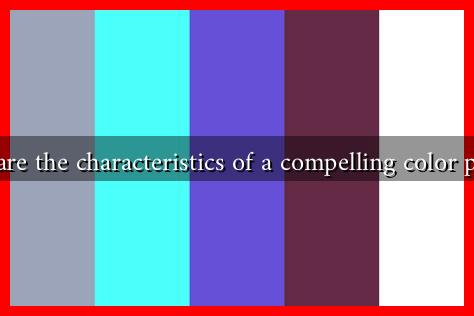-
Table of Contents
What are the Characteristics of a Compelling Color Palette?
Color plays a pivotal role in design, influencing emotions, perceptions, and even behaviors. A compelling color palette can elevate a brand, enhance user experience, and create a lasting impression. But what exactly makes a color palette compelling? In this article, we will explore the essential characteristics of an effective color palette, supported by examples and insights from design experts.
Understanding Color Theory
Before diving into the characteristics of a compelling color palette, it’s essential to understand the basics of color theory. Color theory encompasses the principles and guidelines that govern how colors interact with one another. The color wheel, developed by Isaac Newton, is a fundamental tool in this theory, showcasing primary, secondary, and tertiary colors.
Key Characteristics of a Compelling Color Palette
A compelling color palette is not just a random selection of colors; it is a carefully curated collection that serves a specific purpose. Here are the key characteristics that define an effective color palette:
- Harmony: A harmonious color palette features colors that complement each other. This can be achieved through analogous colors (colors next to each other on the color wheel) or complementary colors (colors opposite each other). For example, the branding of Starbucks uses a harmonious green and white palette that evokes feelings of calm and freshness.
- Contrast: Effective use of contrast can make elements stand out and improve readability. High contrast between text and background colors is crucial for accessibility. For instance, the website of the New York Times uses a stark black and white contrast that enhances readability and draws attention to important headlines.
- Consistency: A compelling color palette should be consistent across all platforms and materials. This consistency helps in building brand recognition. Coca-Cola’s iconic red and white color scheme is a prime example of how consistent use of color can create a strong brand identity.
- Emotional Impact: Colors evoke emotions and can influence consumer behavior. For example, blue is often associated with trust and reliability, making it a popular choice for financial institutions like Chase Bank. Understanding the psychological effects of colors can help in selecting the right palette for your target audience.
- Flexibility: A good color palette should be versatile enough to work across various mediums, from digital to print. For instance, Adobe’s color palette adapts well to different applications, ensuring that their branding remains effective whether on a website or a business card.
Case Studies: Successful Color Palettes
To illustrate the effectiveness of a compelling color palette, let’s look at a few case studies:
- Airbnb: The Airbnb color palette features a warm coral hue, which conveys a sense of belonging and comfort. This choice aligns with their brand message of creating a home away from home.
- Spotify: Spotify’s use of vibrant green against a dark background creates a striking contrast that is both modern and energetic. This palette resonates with their youthful audience and enhances the overall user experience.
- Target: The bold red of Target’s branding is not only eye-catching but also evokes feelings of excitement and urgency, which is effective in retail environments.
Statistics on Color and Consumer Behavior
Research shows that color can significantly impact consumer behavior. According to a study by the Institute for Color Research, people make a subconscious judgment about a product within 90 seconds of initial viewing, and between 62% to 90% of that assessment is based on color alone. This statistic underscores the importance of a well-thought-out color palette in branding and marketing.
Conclusion
In conclusion, a compelling color palette is characterized by harmony, contrast, consistency, emotional impact, and flexibility. By understanding these characteristics and applying them thoughtfully, designers can create color palettes that not only enhance aesthetics but also drive engagement and brand loyalty. As seen in the case studies, successful brands leverage color to communicate their values and connect with their audience effectively. Whether you are designing a website, creating a logo, or developing marketing materials, investing time in crafting a compelling color palette is essential for success.
For further reading on color theory and its applications in design, consider visiting Adobe Color.


